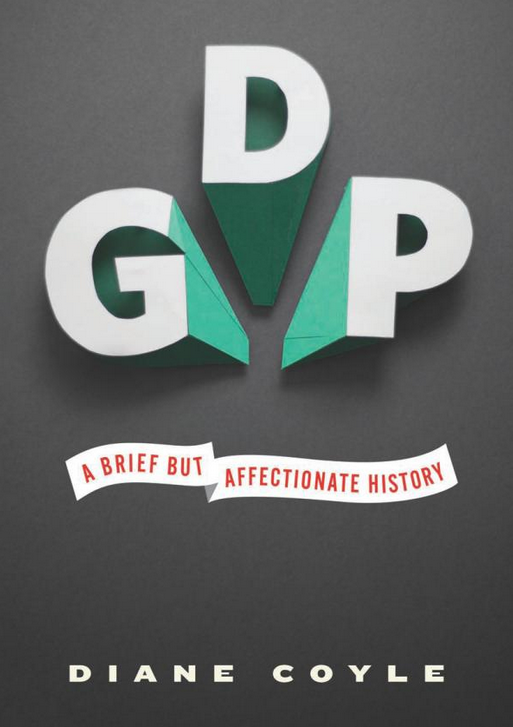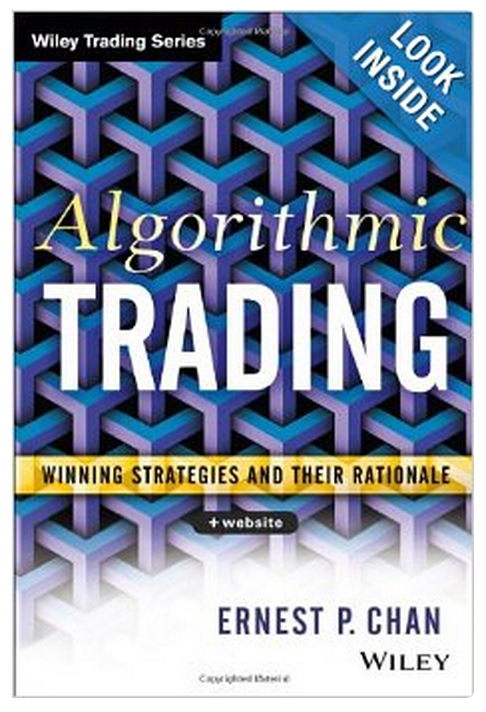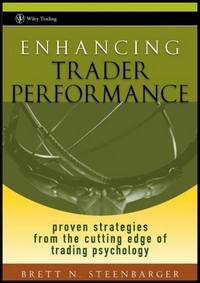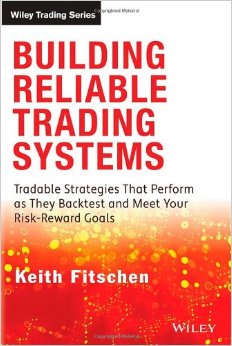Forum on trading, automated trading systems and testing trading strategies
Something Interesting to Read July 2014
Sergey Golubev, 2014.07.21 09:49
GDP: A Brief but Affectionate History
by
Diane Coyle

Why did the size of the U.S. economy increase by 3 percent on one day in mid-2013--or Ghana's balloon by 60 percent overnight in 2010? Why did the U.K. financial industry show its fastest expansion ever at the end of 2008--just as the world's financial system went into meltdown? And why was Greece's chief statistician charged with treason in 2013 for apparently doing nothing more than trying to accurately report the size of his country's economy? The answers to all these questions lie in the way we define and measure national economies around the world: Gross Domestic Product. This entertaining and informative book tells the story of GDP, making sense of a statistic that appears constantly in the news, business, and politics, and that seems to rule our lives--but that hardly anyone actually understands.
Diane Coyle traces the history of this artificial, abstract, complex, but exceedingly important statistic from its eighteenth- and nineteenth-century precursors through its invention in the 1940s and its postwar golden age, and then through the Great Crash up to today. The reader learns why this standard measure of the size of a country's economy was invented, how it has changed over the decades, and what its strengths and weaknesses are. The book explains why even small changes in GDP can decide elections, influence major political decisions, and determine whether countries can keep borrowing or be thrown into recession. The book ends by making the case that GDP was a good measure for the twentieth century but is increasingly inappropriate for a twenty-first-century economy driven by innovation, services, and intangible goods.
Forum on trading, automated trading systems and testing trading strategies
Something Interesting in Financial Video October 2013
Sergey Golubev, 2013.09.30 11:19
Interview With Richard Duncan, Author of The New Depression
==========
Richard Duncan's web site: http://www.richardduncaneconomics.com
Richard Duncan is author of the following book :
The New Depression: The Breakdown of the Pap
When the United States stopped backing dollars with gold in 1968, the nature of money changed. All previous constraints on money and credit creation were removed and a new economic paradigm took shape. Economic growth ceased to be driven by capital accumulation and investment as it had been since before the Industrial Revolution. Instead, credit creation and consumption began to drive the economic dynamic. In The New Depression: The Breakdown of the Paper Money Economy, Richard Duncan introduces an analytical framework, The Quantity Theory of Credit, that explains all aspects of the calamity now unfolding: its causes, the rationale for the government's policy response to the crisis, what is likely to happen next, and how those developments will affect asset prices and investment portfolios.
In his previous book, The Dollar Crisis (2003), Duncan explained why a severe global economic crisis was inevitable given the flaws in the post-Bretton Woods international monetary system, and now he's back to explain what's next. The economic system that emerged following the abandonment of sound money requires credit growth to survive. Yet the private sector can bear no additional debt and the government's creditworthiness is deteriorating rapidly. Should total credit begin to contract significantly, this New Depression will become a New Great Depression, with disastrous economic and geopolitical consequences. That outcome is not inevitable, and this book describes what must be done to prevent it.
- Presents a fascinating look inside the financial crisis and how the New Depression is poised to become a New Great Depression
- Introduces a new theoretical construct, The Quantity Theory of Credit, that is the key to understanding not only the developments that led to the crisis, but also to understanding how events will play out in the years ahead
- Offers unique insights from the man who predicted the global economic breakdown
Alarming but essential reading, The New Depression explains why the global economy is teetering on the brink of falling into a deep and protracted depression, and how we can restore stability.

=========
Here's a summary of the points discussed:
1. The book starts with a discussion of fractional reserve banking,
observing the connection between debt and money and how debt and
inflation go together.
2. Richard views the current monetary system as flawed and in trouble,
but does not view a return to a gold standard of any kind as possible.
Rather, he thinks the best hope is for governments to attempt to borrow
at very low rates and invest not in consumption but in growth -- invest
in projects that will offer a high economic return. He cites investing
in a new energy grid as an example.
3. Richard does not view China dumping US Treasuries, or the world
decoupling from the dollar as a viable threat. This seems to be part of
why he believes there are a few more years left where low interest rates
are achievable.
4. In terms of investments, Richard favors real estate that can be turned into rental income. He finds public stocks to be a bit too close to the derivatives crisis, and does not think gold is immune to a severe decline if growth cannot be obtained.
Forum on trading, automated trading systems and testing trading strategies
Something Interesting to Read May 2014
Sergey Golubev, 2014.04.28 10:33
Chan: Algorithmic Trading: Winning Strategies and Their Rationale (Wiley Trading)

Engaging and informative, Algorithmic Trading skillfully covers a wide
array of strategies. Broadly divided into the mean-reverting and
momentum camps, it lays out standard techniques for trading each
category of strategies and, equally important, the fundamental reasons
why a strategy should work. The emphasis throughout is on simple and
linear strategies, as an antidote to the over-fitting and data-snooping
biases that often plague complex strategies. Along the way, it provides
comprehensive coverage of:
- Choosing the right automated execution platform as well as a backtesting platform that will allow you to reduce or eliminate common pitfalls associated with algorithmic trading strategies
- Multiple statistical techniques for detecting "time series" mean reversion or stationarity, and for detecting cointegration of a portfolio of instruments
- Simple techniques for trading mean-reverting portfolios—linear, Bollinger band, and Kalman filter—and whether using raw prices, log prices, or ratios make the most sense as inputs to these tests and strategies
- Mean-reverting strategies for stocks, ETFs, currencies, and futures calendar and intermarket spreads
- The four main drivers of momentum in stocks and futures, and strategies that can extract time series and cross sectional momentum
- Newer momentum strategies based on news events and sentiment, leveraged ETFs, order flow, and high-frequency trading
- Issues involving risk and money management based on the Kelly formula, but tempered with the author's practical experience in risk management involving black swans, Constant Proportion Portfolio Insurance, and stop losses
- Mathematics and software are the twin languages of algorithmic trading. This book stays true to that view by using a level of mathematics that allows for a more precise discussion of the concepts involved in financial markets. And it includes illustrative examples that are built around MATLAB© codes, which are available for download.
Dual Momentum Investing: An Innovative Strategy for Higher Returns with Lower Risk
by
Gary Antonacci

After examining more than two-hundred years of data across dozens of markets and asset classes, the conclusion is clear: Momentum continually outperforms. However, most
mainstream investors haven't had a way to fully discover and implement
the benefits of momentum investing . . . until now! Whether you're an independent investor, investment professional, or money manager, Dual Momentum Investing enables you to consistently profit on major changes in relative strength and market trend.
Based on the award-winning work of Gary Antonacci, an expert in modern portfolio theory and optimization, this groundbreaking guide presents an easy-to-understand, straightforward model that transforms momentum concepts into an actionable investing strategy called Global Equity Momentum (GEM). By combining relative-strength
momentum and absolute momentum, this unique methodology lets you take
advantage of intra-market trends while avoiding large drawdowns. A
disciplined implementation of his proven strategy enhances the ability
of every investor to:
- Lock in profits and mitigate risk with a minimal number of switches per year among U.S. equities, non-U.S. equities, and bonds.
- Establish meaningful control over investment risk once an asset's value begins to decline.
- Remove emotional and behavioral biases from your decision-making, while taking advantage ofthese same biases in others to achieve exceptional returns.
by Jason Kelly

Take the stress out of investing with this revolutionary new strategy from the author of The Neatest Little Guide to Stock Market Investing, now in its fifth edition.
By targeting three percent growth and adjusting holdings to meet that
goal, even novice investors can level the financial playing field and
ensure a secure retirement free from the stress of noisy advice that
doesn't work. The plan's simple technique cuts through the folly of
human emotion by reacting intelligently to price changes and
automatically buying low and selling high. Relayed in the same
easy-to-understand language that has made The Neatest Little Guide to Stock Market Investing such a staple in the investing community, The 3% Signal is sure to become your most trusted guide to investing success.
The 1 Hour Trade: Make Money With One Simple Strategy, One Hour Daily
by
Brian P Anderson

Trading is one of the few ways to realistically create your own "Rags to
Riches" Story. But it's not a get rich quick strategy that will get you
there. The secret is to adopt a laser beam focus on ONE specific
strategy until you've mastered it. In "The 1 Hour Trade,"
you'll get a detailed, step-by-step blueprint that works. Unlike other
trading books giving you investment theory, you'll be taught a
successful strategy in its entirety, including the specific scanning
parameters for locating the trades, the exact analysis decisions you'll
need to qualify the trade, and the specific steps to take to execute the
trade and come out with a profit.
This Book Is Not a "Black Box" Automated Trading System. You will need to use your brain, and work hard practicing the analysis process in order to be successful.
You'll learn how to:
- Scan in real time for stocks poised for huge intraday gains
- Analyze chart history to identify whether a setup is likely to succeed or not
- Identify areas that allow for optimal exits in order to maximize profit
- "Listen" to what the price action and volume are saying about what's likely to unfold
Forum on trading, automated trading systems and testing trading strategies
Something Interesting to Read January 2014
Sergey Golubev, 2014.01.09 16:52
Harmonic Trading, Volume One: Profiting from the Natural Order of the Financial Markets: Scott M. Carney: 9780137051502: Amazon.com: Books
Harmonic Trading creator Scott Carney unveils the entire methodology to
turn patterns into profits. These strategies consistently identify the
price levels and market turning points that reveal the natural order
within the chaos of the financial markets. Analogous to the predictable
behavior of many of life’s natural processes, Harmonic Trading examines
similar relationships within the financial markets to define profitable
opportunities in an unprecedented manner. Carney introduces new
discoveries such as the Bat pattern, Alternate AB=CD structures, the
0.886 retracement, and more. These strategies are entirely new to the
trading community, and they represent a profound advancement beyond all
other Fibonacci methodologies!
After you’ve discovered how to identify harmonic patterns, Carney
presents a complete methodology for applying them in trade execution and
handling them throughout the entire trade management process. From
savage bear to rampaging bull, Harmonic Trading can be employed in all
markets--equities, currencies, commodities, and foreign markets--for
both short- and long-term timeframes.
Forum on trading, automated trading systems and testing trading strategies
Something Interesting to Read January 2014
Sergey Golubev, 2014.01.23 12:30
New Trading Systems And Methods : Fourth Edition

As markets evolve, so must the strategies used to trade them. No one
understands this more than Perry Kaufman—one of today's most respected
futures experts. For more than twenty-five years, traders have turned to
Kaufman's classic Trading Systems and Methods for complete information
about the latest, most successful indicators, programs, algorithms, and
systems. Now, in New Trading Systems and Methods, Fourth Edition,
Kaufman thoroughly updates his bestselling guide—adding more systems,
more methods, and an extensive array of risk analysis techniques—and
shows you the best ways to trade today's futures and equities markets.
The companion CD-ROM, which contains TradeStation® code and Excel
spreadsheets, has been added to help you electronically implement the
systems and methods mentioned throughout the book.
New Trading Systems and Methods, Fourth Edition provides you with a
complete understanding of the tools and techniques needed to develop or
choose a trading program that is right for you. It begins with a
discussion of basic concepts, including definitions, how much data to
use, how to create an index, some statistics and probability, and other
tools that will be used throughout the book, then moves on to techniques
that are most important to trading—identifying the trend and momentum.
Other chapters are organized by common grouping so that you can compare
the different ways that similar problems have been solved. The
systematic approach to charting has been significantly expanded in this
edition, showing how various patterns can be compared to other
systematic methods, or how techniques such as identifying support and
resistance, or channels, can be computerized. Examples include a wide
range of futures and stocks.
New Trading Systems and Methods, Fourth Edition doesn't attempt to prove
that one system is better than another, because it's impossible to know
what will happen in the future or how you will cleverly apply these
techniques. Instead, it tries to evaluate the conditions under which
certain methods are likely to do better and the situations that will be
harmful to specific approaches. By grouping similar systems and
techniques together, you'll be able to personally compare the
differences and study the results. Seeing how analysts have modified
existing ideas can help you decide how to proceed and give you an
understanding of why you might choose one path over another. Since no
trader can be successful without controlling risk, this edition also
includes expanded coverage of portfolio allocation, which will allow you
to efficiently balance trading exposure.
As the competition for trading profits gets keener, you need to look for
more innovative—and sometimes more extensive—solutions. You need
strategies that are different from those of other traders. You need the
tools, skills, and awareness that only New Trading Systems and Methods,
Fourth Edition can provide.
Forum on trading, automated trading systems and testing trading strategies
Something Interesting to Read August 2014
Natasya Saad, 2014.08.10 08:54
Enhancing Trader Performance: Proven Strategies From the Cutting Edge of Trading Psychology

Trading is a performance discipline, and like Olympic athletes, elite military troops, and performing artists, traders can structure their development to achieve competence and expertise. Through his own trading experiences and those of individuals he has mentored, Dr. Brett Steenbarger is familiar with the challenges thattraders face and the performance and psychological strategies that can meet those challenges.
In his first book, The Psychology of Trading, Dr. Steenbarger provided a framework for understanding and overcoming the mental obstacles to successful trading. Now, in Enhancing Trader Performance, he goes a step further and shows you how to transform talent into trading skill through a structured process of expertise development.
Straightforward and accessible, this comprehensive guide:
- Discusses the importance of finding an optimal fit between your trading talents and interests; the markets you trade; and the ways you trade those markets
- Explores how you can enter into a learning process that will cultivate your tradingcompetence and expertise
- Introduces the concept of learning loops, which enable you to make progressive improvements in your trading methods
- Breaks down performance into three components—mechanics, tactics, and strategy—and examines the role of each in generating trading success
- Illustrates how you can coach yourself with practical cognitive and behavioral techniques that rapidly change problem patterns and build new, positive ways of thinking and behaving
When you enhance your performance as a trader, you replace a small piece of randomness with intention. This enables you to make more informed trading decisions as you make your way through today's dynamic markets. Filled with in-depth insights, practical advice, solid research, and detailed examples, Enhancing Trader Performance offers an innovative approach to market mastery.
Forum on trading, automated trading systems and testing trading strategies
Something Interesting to Read June 2014
Muhammad Syamil Bin Abdullah, 2014.06.26 07:00

A tradable strategy is one that fits your own risk-reward goals and trades as well in real time as it performs in a development backtest. While it's not easy to create a tradable strategy, due to pitfalls ranging from excessive curve-fitting to greed, if done the right way, you can achieve a realistic level of success.
Nobody understands this better than author Keith Fitschen—a thought leader in trading system development whose most popular system, Aberration, has been named "One of the Top Ten Trading Systems of All Time" by Futures Truth. For more than twenty-five years, Fitschen has developed and actively traded his proven systems, and now he shares his extensive experience in this field with you.
Engaging and accessible, Building Reliable Trading Systems opens with a practical look at exactly what is achievable with a trading strategy. This includes documented performance from some of the best money managers in the world over the last five years, metrics that best characterize a trading strategy's performance, and a set of questions to help you define what would constitute a "tradable strategy" according to your personal risk-taking tolerance. It also addresses one of the biggest problems in developing a strategy—curve-fitting—and presents a unique methodology known as "Build, Rebuild, and Compare," or BRAC, that can be used to determine the degree of curve-fitting in your strategy development.
With this information in hand, Fitschen moves on to outline two tradable systems: one a short-term scalping system for stocks, and the other a mid-term trend-following strategy for commodities. Entries, exits, and trading filters are discussed as these systems are developed. By the end of the process, both are "tradable" as is, but in order to tailor them to a range of risk-reward profiles—from large stock and commodity accounts to small—you'll be introduced to some essential money management techniques. Fitschen also develops a money management overlay to trade the stock and commodity strategies together, which can yield a trading solution that is better than either alone.
And for those who want even more detail about the strategies developed in this book, the trades for both systems can be found on www.keithstrading.com. At the website, you can input your user name and password to find the TradeStation Easy Language code and daily signals for them.
Written with the serious trader in mind, Building Reliable Trading Systems contains information that you'll be hard-pressed to find elsewhere—from BRAC to bar-scoring—and will put you in a better position to generate realistic trading returns over time.
- Free trading apps
- Over 8,000 signals for copying
- Economic news for exploring financial markets
You agree to website policy and terms of use

This is the thread about books related for stocks, forex, financial market and economics. Please make a post about books with possible cover image, short description and official link to buy (amazon for example).
Posts without books' presentation, without official link to buy and with refferal links will be deleted.Posts with links to unofficial resellers will be deleted